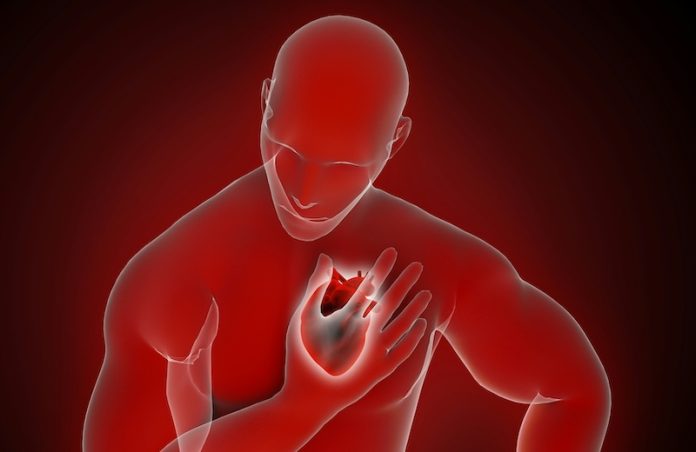
Coronary artery disease (CAD) occurs when the main blood vessels that supply the heart become damaged or blocked. This often happens because of a buildup of fatty deposits, known as plaque, along with inflammation in the arteries.
Over time, this can narrow the arteries and restrict blood flow to the heart, leading to serious problems like heart attacks.
The buildup of plaque in the arteries, called atherosclerosis, develops gradually, often without causing any symptoms at first. But as the arteries narrow, certain signs may start to appear, signaling the risk of a more severe heart issue.
Recognizing these early signs can help prevent heart attacks and other serious cardiovascular events.
One of the most common symptoms of CAD is chest pain, known as angina. This type of pain can feel like pressure or tightness in the center of the chest and may spread to other areas, like the shoulders, arms, neck, jaw, or back.
Angina often happens during physical activity or emotional stress when the heart needs more oxygen, but it doesn’t last long and usually goes away with rest. If someone experiences new chest pain or their angina suddenly worsens, it’s essential to see a doctor right away.
Shortness of breath is another key sign of artery blockages. When the heart doesn’t get enough oxygen due to narrowed arteries, it struggles to pump blood effectively, especially during physical activity.
This can make a person feel out of breath, tired, or even dizzy. People with CAD often notice they get winded more easily during everyday tasks or exercise.
Heart palpitations, or irregular heartbeats, can also be a sign of artery blockages. This might feel like fluttering, pounding, or a rapid heartbeat. Palpitations happen because the heart has to work harder to pump blood through the narrowed arteries, leading to irregular rhythms.
For some, particularly women, symptoms of a heart problem may not be as obvious. Nausea, indigestion, heartburn, or stomach pain can occur during a heart attack and are more commonly mistaken for other conditions like a stomach issue or the flu.
These symptoms can make it harder to recognize a heart attack when it’s happening.
Another sign of possible arterial blockage is fatigue. Some people experience extreme tiredness that seems out of proportion to their daily activities.
This type of fatigue, especially if it lasts for days or occurs during tasks that didn’t previously cause tiredness, could indicate that the heart is struggling to keep up with the body’s needs.
Sweating without a clear reason, particularly if it’s a cold sweat, is another warning sign. If someone suddenly starts sweating heavily alongside other symptoms like chest pain or shortness of breath, it might indicate a heart attack is occurring, and they should seek medical help immediately.
If any of these symptoms are present, it’s crucial to see a healthcare provider. Doctors can use various diagnostic tools like stress tests, echocardiograms, or coronary angiograms to evaluate how severe the blockages are and decide on the best course of treatment.
Treatment for coronary artery disease varies depending on how serious the blockages are. For many people, lifestyle changes such as improving their diet, getting regular exercise, and quitting smoking can help manage the condition.
Medications may also be prescribed to control blood pressure, lower cholesterol, or prevent blood clots. In more severe cases, medical procedures like angioplasty (to open the arteries) or bypass surgery (to reroute blood around the blocked areas) may be necessary.
Maintaining a healthy lifestyle is the best way to prevent coronary artery disease from developing or getting worse. Eating a balanced diet that’s low in unhealthy fats and cholesterol, exercising regularly, and avoiding smoking can all reduce the risk.
Regular check-ups with a doctor are also important for catching early signs of artery blockages, especially for those who are at higher risk, such as people with high blood pressure, diabetes, or a family history of heart disease.
In conclusion, being aware of the early signs of blocked arteries and taking quick action can make a significant difference in preventing heart attacks and managing heart disease.
Taking steps to live a heart-healthy lifestyle, combined with regular medical care, is key to reducing the risks associated with coronary artery disease.
If you care about heart disease, please read studies about a big cause of heart failure, and common blood test could advance heart failure treatment.
For more information about heart health, please see recent studies about a new way to repair human heart, and results showing drinking coffee may help reduce heart failure risk.
Copyright © 2024 Knowridge Science Report. All rights reserved.



